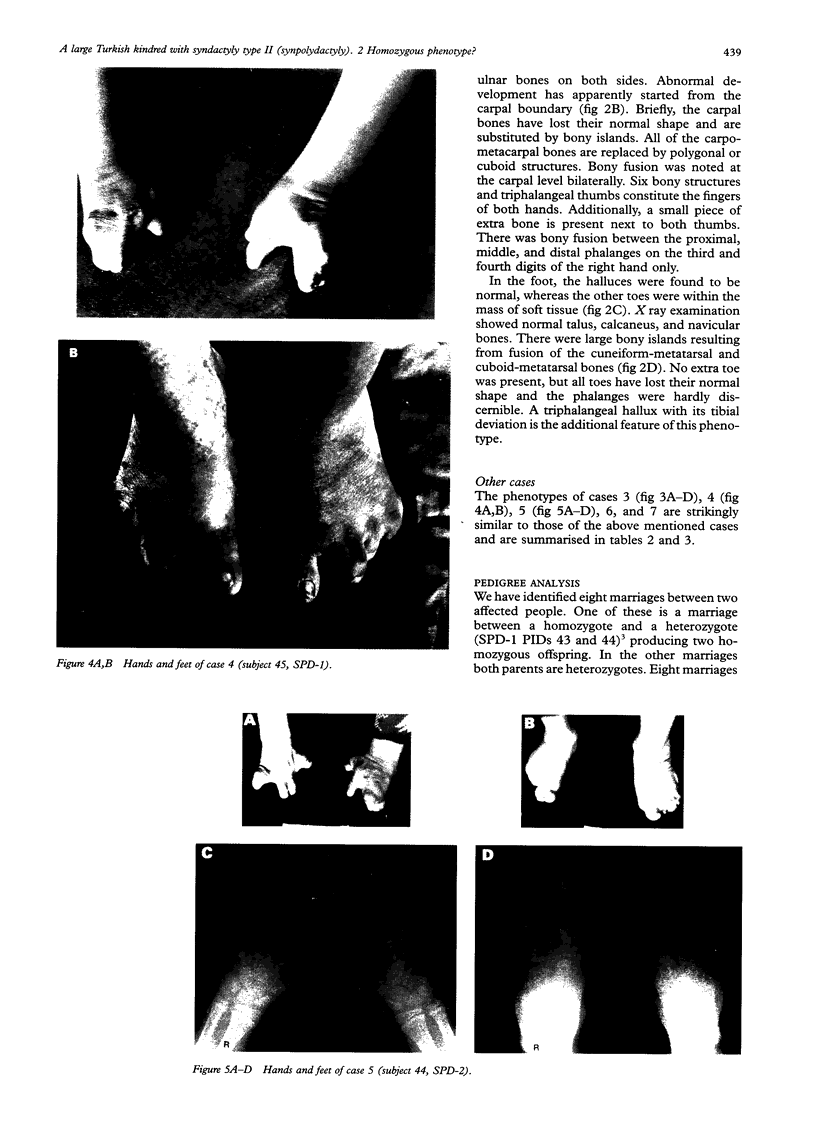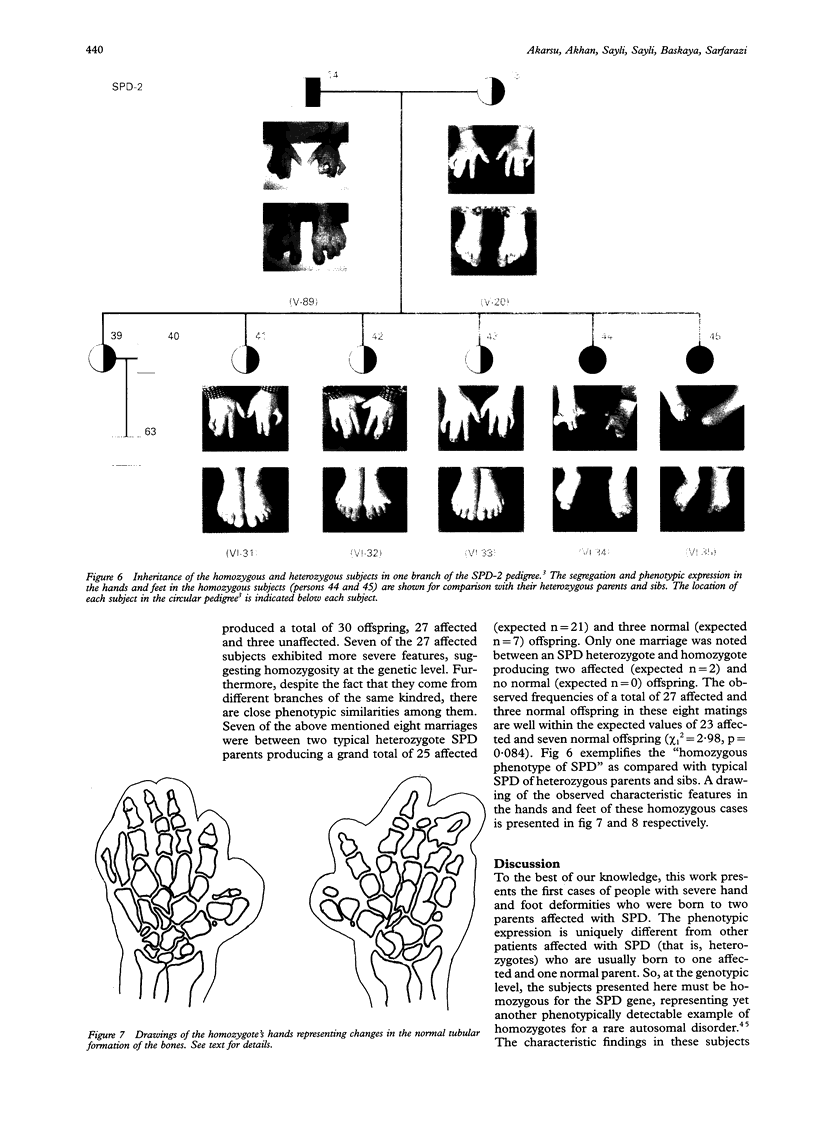Abstract
Syndactyly type II (synpolydactyly (SPD)) is an autosomal dominant condition with typical abnormalities of the distal parts of both upper and lower limbs. We report here a previously undescribed phenotypic feature of people with severe hand and foot deformities who were born to two affected parents. This is the first example of SPD subjects manifesting a very distinctive phenotype, suggesting that they must be homozygous for this condition. The typical characteristic clinical features in these subjects are as follows: (1) short hands with wrinkled fatty skin and short feet; (2) complete soft tissue syndactyly involving all four limbs; (3) polydactyly of the preaxial, mesoaxial, and postaxial digits of the hands; (4) loss of the normal tubular shape of the carpal, metacarpal, and phalangeal bones, so as to give polygonal structures; (5) loss of the typical structure of the cuboid and all three cuneiform bones while the talus calcaneus and navicular bones remain intact; (6) large bony islands instead of metatarsals, most probably because of cuboid-metatarsal and cuneiform-metatarsal fusions; and (7) severe middle phalangeal hypoplasia/aplasia as well as fusion of some phalangeal structures that are associated with the loss of normal phalangeal pattern. We report seven subjects with this phenotype from three different branches of a very large SPD pedigree exhibiting the same phenotype with minimal variation. In mice, the Polysyndactyly (Ps) mutation shows a pattern of synpolydactyly very similar to that of human SPD, suggesting that they may well be homologous mutations. A molecular genetic study is currently under way to determine the chromosomal location of the SPD locus in humans and to identify the corresponding homologous region in mice.
Full text
PDF






Images in this article
Selected References
These references are in PubMed. This may not be the complete list of references from this article.
- Cross H. E., Lerberg D. B., McKusick V. A. Type II syndactyly. Am J Hum Genet. 1968 Jul;20(4):368–380. [PMC free article] [PubMed] [Google Scholar]
- Hultén M. A., Honeyman M. M., Mayne A. J., Tarlow M. J. Homozygosity in piebald trait. J Med Genet. 1987 Sep;24(9):568–571. doi: 10.1136/jmg.24.9.568. [DOI] [PMC free article] [PubMed] [Google Scholar]
- Johnson D. R. Polysyndactyly, a new mutant gene in the mouse. J Embryol Exp Morphol. 1969 Apr;21(2):285–294. [PubMed] [Google Scholar]
- Pauli R. M. Dominance and homozygosity in man. Am J Med Genet. 1983 Dec;16(4):455–458. doi: 10.1002/ajmg.1320160403. [DOI] [PubMed] [Google Scholar]
- Sayli B. S., Akarsu A. N., Sayli U., Akhan O., Ceylaner S., Sarfarazi M. A large Turkish kindred with syndactyly type II (synpolydactyly). 1. Field investigation, clinical and pedigree data. J Med Genet. 1995 Jun;32(6):421–434. doi: 10.1136/jmg.32.6.421. [DOI] [PMC free article] [PubMed] [Google Scholar]
- Winter R. M. Malformation syndromes: a review of mouse/human homology. J Med Genet. 1988 Jul;25(7):480–487. doi: 10.1136/jmg.25.7.480. [DOI] [PMC free article] [PubMed] [Google Scholar]
- Winter R. M., Tickle C. Syndactylies and polydactylies: embryological overview and suggested classification. Eur J Hum Genet. 1993;1(1):96–104. doi: 10.1159/000472392. [DOI] [PubMed] [Google Scholar]








